NOTE: In the winter of 1988-89, I was making preparations for the premiere of “The Canyon Country Zephyr.” In those winter months and from then on, I was constantly taking photographs of well-known Moabites (and potential advertisers for my Zephyr cartoon ads,) But there was also a sense, almost undefinable, that Moab and its future were on the cusp of something big…different. Good or Bad? I wasn’t sure, but I was taking no chances. I started photographing every alfalfa filed, old building an vacant lots I could find. This is the first volume of the fruits from that effort. Bittersweet memories…JS
One morning in December 1989, I went downtown to check out the Christmas decorations. After a fairly chaotic tourist season, which had started last March and wound down in mid-October. now Main Street was dead. Many businesses had put up signs that read “Closed For The Winter.” There wasn’t enough tourist traffic during the winter months to sustain the number of new businesses that had opened in the last couple of years.
I saw fellow Moab resident Lucy Wallingford appreciating the relative quiet and especially how empty Main Street was. To emphasize the point, I asked Lucy if she would lie down in the middle of the turning lane. Lucy quickly assumed a location at the pointy end of the arrow. (I should note that this was a staged photograph. Lucy was not lying there before I arrived.
This is perfect, I thought. “The Way Life Should Be.”
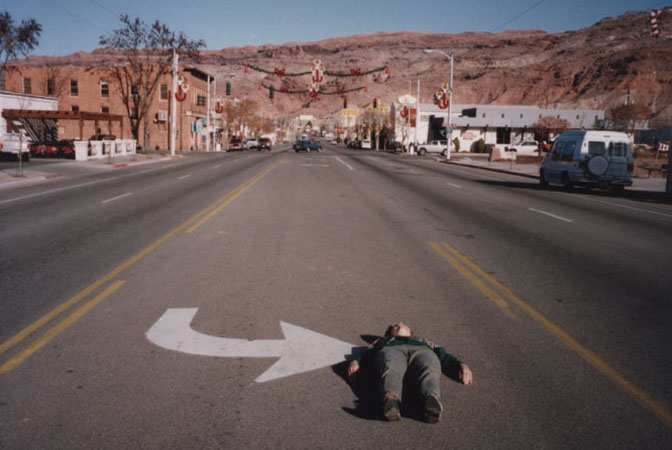
I knew deep down, that this kind of fluctuating economy might work for some, like those locals who like to post their “Gone Fishing” signs. But it was clear that among the already “new” New Moabites, the lull in economic activity was a worry that needed to be corrected. I was a New Moabite myself, having only moved to Moab 15 years earlier. I had recently become a home owner in 1985. The collapse of the uranium industry turned Moab into a near-ghost town. A quarter of its homes were for sale. Some of the smaller, rundown houses were selling for as little as $15,000.
The sport of mountain biking had exploded on the West Coast and a new magazine dedicated to the sport put Moab on its front cover. No one could have seen what was coming. At least not on a scale that has transformed Moab into a totally different place. I left when Moab no longer felt a like a small rural community. For me, that was 20 years ago. But many others have hung tough and stayed on. Property taxes have increased and almost made it impossible for a young person of modest income to buy a home.
Though I’ve put ‘1989’ in the title of this story, I’m really speaking more broadly about those transformational years, from 1987 to 1993. And in fact, I HAVE written about these issues in the past, and I don’t want to repeat myself. (Haven’t we ALL had enough of that!) Instead, I have speckled so many hot links into this story that some of you may never reach the end of this one.
But this is intended to be a photograph album and is almost exclusively dedicated to the images of those seminal years. The places and the faces. The town looked different in 1989 and we had become accustomed to the look. Not much had happened in Moab since the mill shut down. But there was a feeling that the town was on the cusp of something. The city hired, and I interviewed, a realtor from Park City to promote Moab a a destination. He came up with the promotion’s theme:
“You’ve come to play…why not STAY?”
Moab citizens weren’t sure what direction they wanted to take for their town. And in in a Zephyr issue, I asked them, “What Does Moab Want.” Moab needed an “amenities economy” some proclaimed. In the late 80s and until the mid-90s, grassroots environmentalists took note of Ed Abbey’s warnings about “Industrial Tourism” and took an active and public stance about the environmental impacts a tourism economy can create (It’s interesting to note that today, some readers blame Abbey, and even The Zephyr, for turning Moab into what it is in 2023.) Still, in the late 80s, the idea of an “educated, more erudite” Moab was pushed and promoted as an alternative to the “extractive industries, like mining, oil exploration, and cattle grazing.
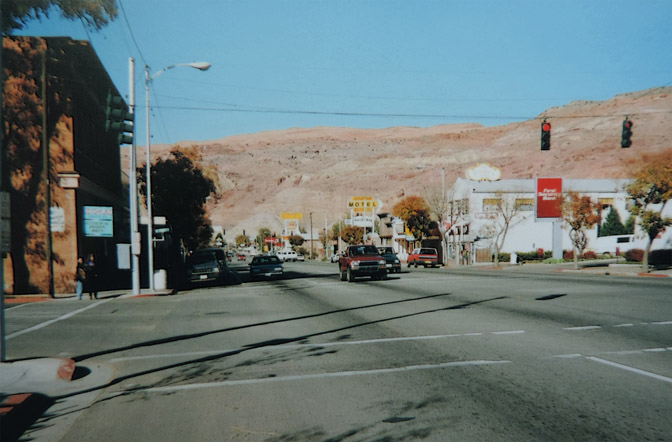
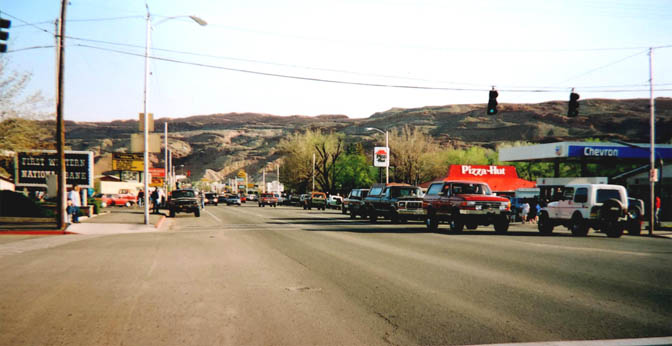
BEFORE THE MOAB INFORMATION CENTER. 1988-89

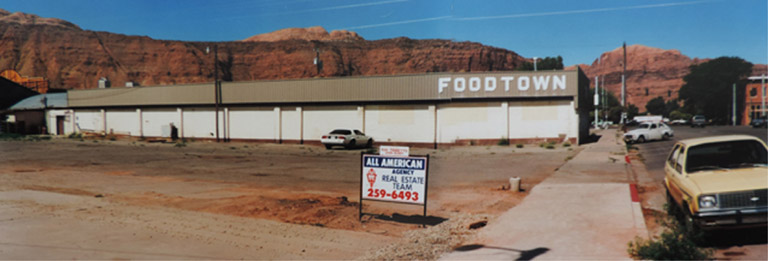
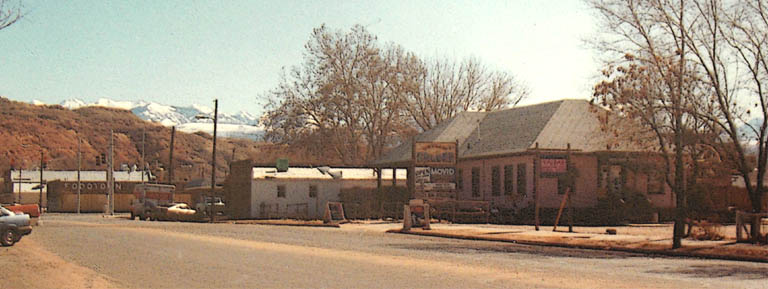
Moab was, for sure, in dire straits; the uranium industry had collapsed, hundreds of jobs had been lost, and a quarter of Moab’s homes were empty and for sale. Moab’s ‘survivors’ were trying to figure out ways to keep their heads above water. Oddly though, because we were all in such a bad way, there was also a spirit of community and togetherness. It was that feeling that convinced me to start a monthly alternative could make it, as long as I kept it simple and my ‘business plan’ cheap.
Many younger Moabites, in their 30s and 40s, decided to make a go of it in Moab. Small businesses popped up along Main Street. Investors had renovated the old Family Budget Clothing store at Main and Center. It reopened as a min-mall of sorts. It became the Grand Emporium and contained several shops.
But in the winter of 1989, there were some Moab landmarks that we assumed would never change. One of them was the Big Tree on First South. I thought it would be there forever. Or at least outlast me.
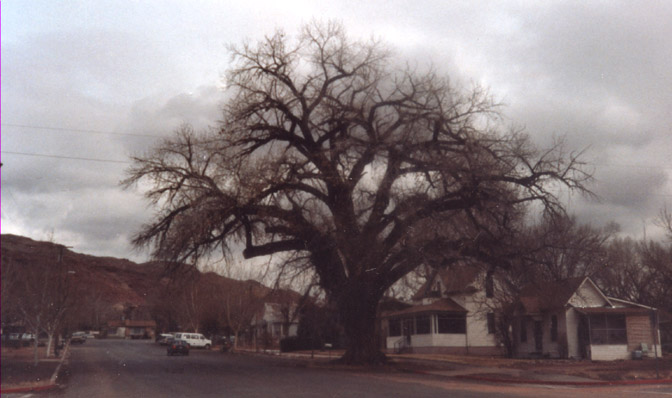
In Moab and Spanish Valley, pastures and alfalfa fields began to vanish. For years we had feared the worst and now Reality finally caught up. In the 1980s, local resident Venice Denny owned some magnificent acreage along Mill Creek, (see below) just across from Dave’s Corner Market, to Moab City for a relative pittance. I wrote a heartfelt plea in The Z, urging the city council to act quickly, to do something bold, something that we would all be grateful for, years and decades later. It would have been a wonderful addition to the Mill Creek Parkway, a green oasis in the middle of a very busy town.
But the city failed to act. Venice finally had no choice but to sell it to private investors. Now, in the late 90s, the land was finally developed as the “Mill Creek Pueblos.” All that open space was transformed into condos.
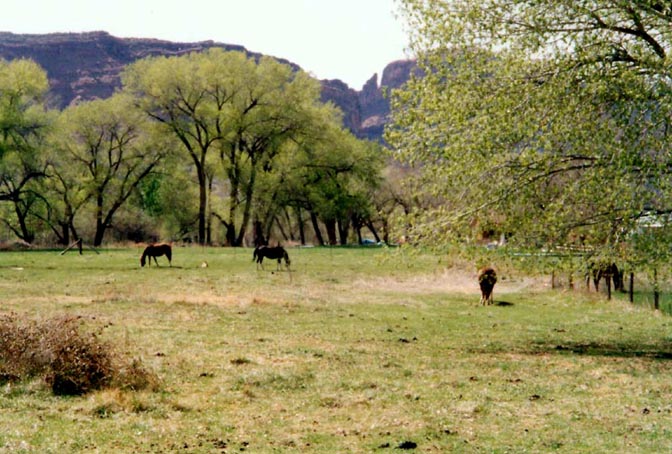
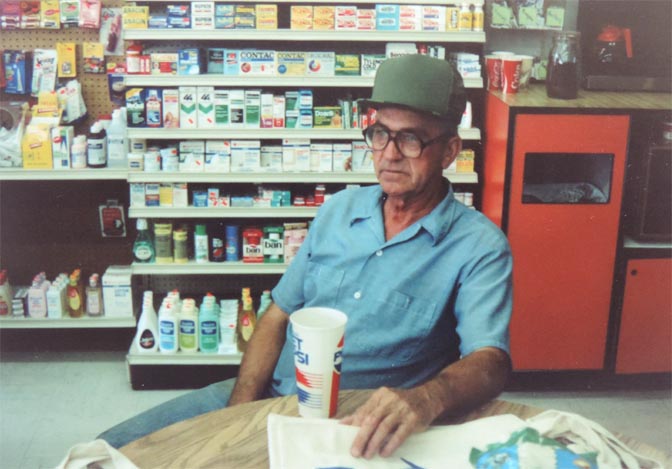
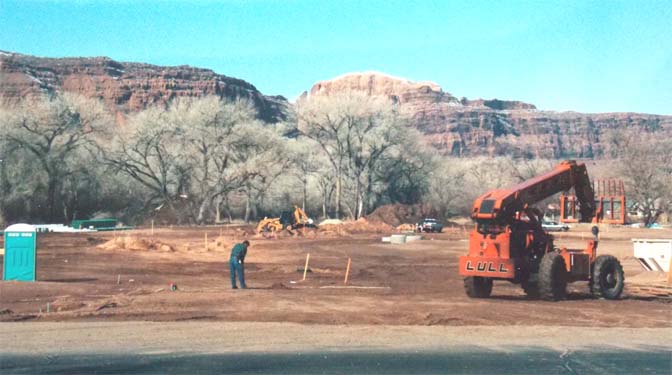
In 1989, the Golden Stake restaurant was one of Moab’s most popular places to eat. I knew it for the incredibly large and reasonably priced cinnamon rolls. But along with Moab’s three small diners — Milt’s, the Westerner Grill, and the Canyonlands Cafe, —The Golden Stake had a loyal local clientele.
But even in 1989, rumors were rampant that corporate chain restaurants were taking a second look at Moab and its revenue potential. By 1993, the changes were coming fast and furious…
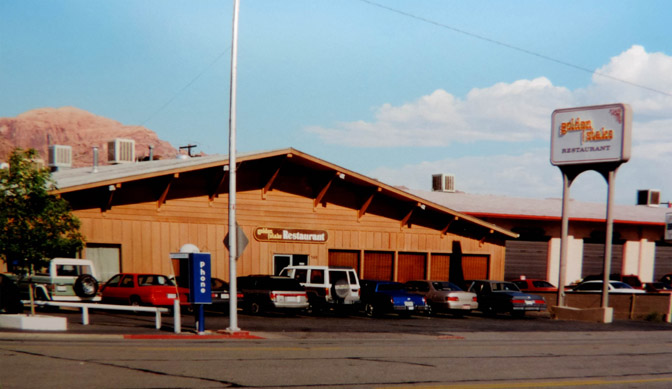
SOME MEMORABLE MOAB & GRAND COUNTY POLITICIANS FROM 1989
I’m not sure when politics lost its flair for the outrageous, flamboyant, and controversial. Scandal is Moab’s middle name. But is politics in Grand County still fun? I don’t see it, though I confess I make the observation from the safety of my High Plains bunker. But the truth is, if you think Moab politics is crazy now, relax….it’s ALWAYS been like this. Even in the 80s, we speculated that maybe it was the uranium in the water. But some of my best friends had worked at Atlas and seemed fairly normal.
It took me years to understand that ‘greed’ is not confined to one ideology or another. Or one political party from another. in 1988, the Grand County Commission, which leaned to the Right, wanted to bring a toxic waste incinerator to Cisco. The early New Moabites (like me) opposed the incinerator. In November 1988, when the county voted it down the incinerator, via a “referendum,” Moab’s future was, in fact, sealed…by the very Moab constituency that thought we had just saved the town.
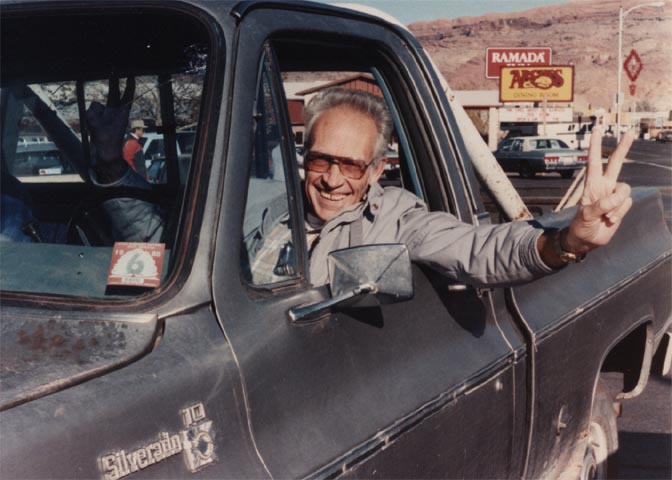
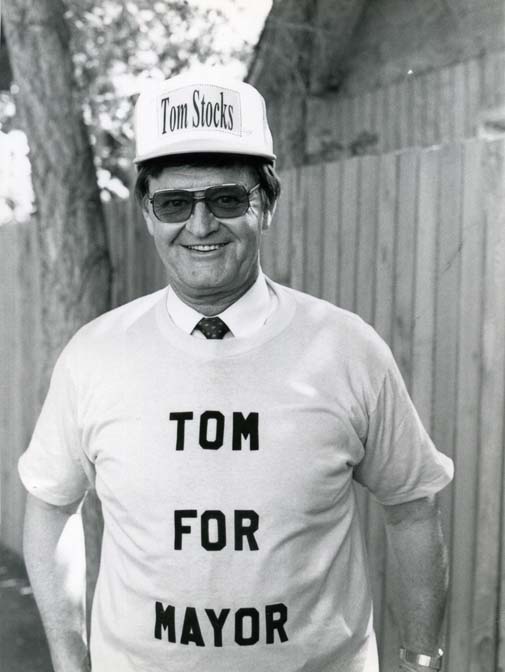
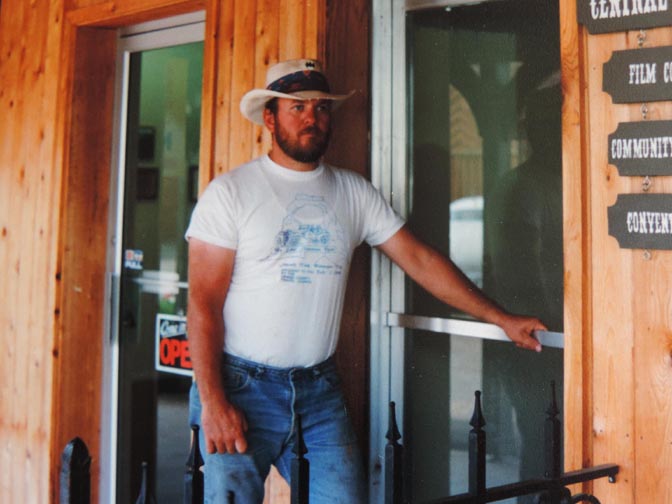
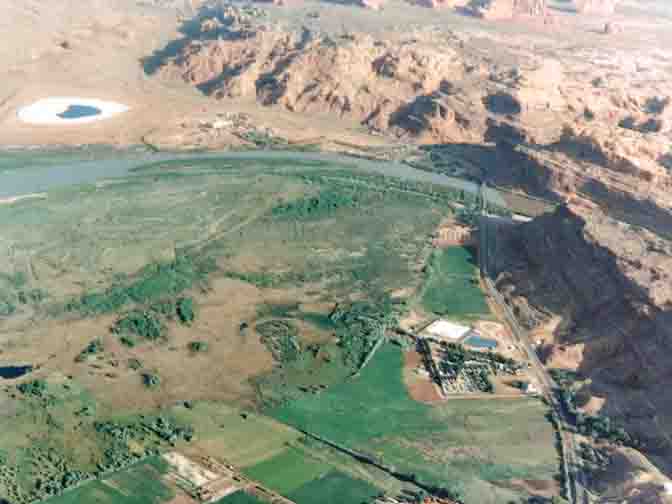
TOOTS McDOUGALD…ANOTHER MOAB FORCE of NATURE
When I bought my little home on Locust lane, I finally started to feel like a Moabite. The ink had barely dried on my $16,000 loan when the woman next door came ou her back door and walked to our shared boundary fence. A cigarette hung from the corner of her mouth. She said, “Are you buyin’ this place or just renting it?” I told her I had, for better or worse, gone in debt to buy it. “Well, I hope you paint that damn aluminum roof. The glare in the afternoon in my kitchen is awful.” She walked back inside; I looked at the roof. It was an unusual aluminum shingled roof and I’ve never seen another one since. But I did paint the roof and Toots and I became great friends. (For more on Toots, click this story…the very first “Zephyr Blue Moon Extra.”)
For the first issue, I interviewed Toots and wrote one of my first profiles of memorable Moabites. Her stepdad was Marv Turnbow, who had bought what’s now called Wolfe Ranch in Arches National Park. Toots and I drove up to the cabin for a closer look. She hadn’t been there in years.
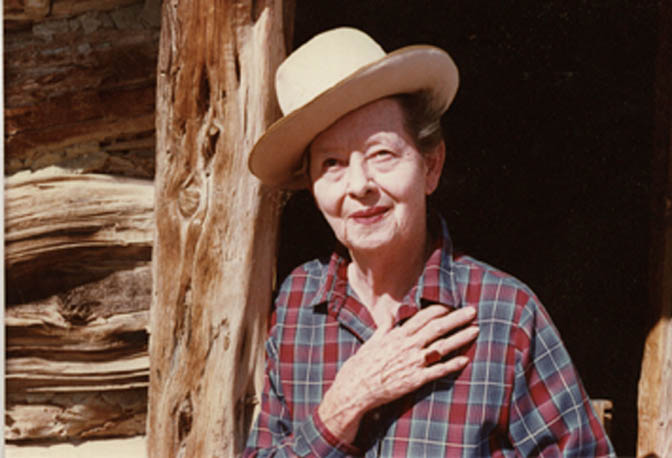
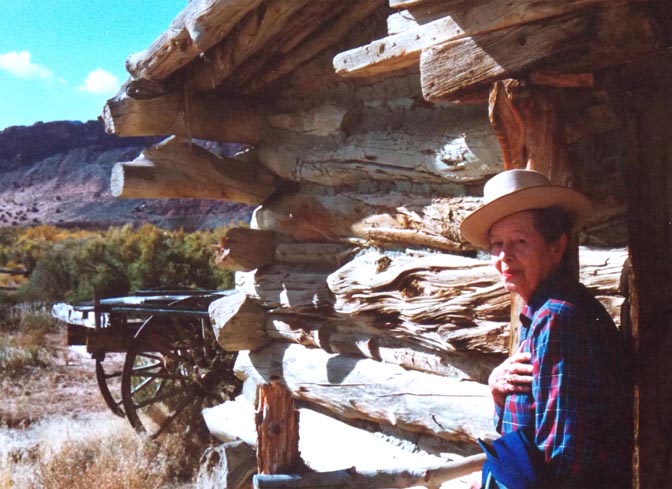
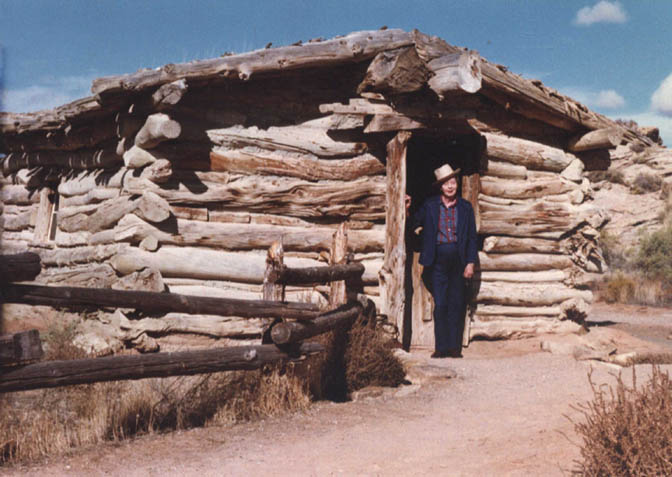
THE POPLAR PLACE FIRE…February 5, 1989
On February 5, 1989, one of Moab’s most popular bars, the Poplar Place, caught fire during the night and completely destroyed the interior, leaving only the adobe brick exterior. For more on the history of the building that for years was even a hideout for ZZ Tops, read former owner Joe Kingsley’s recollections. Click here.
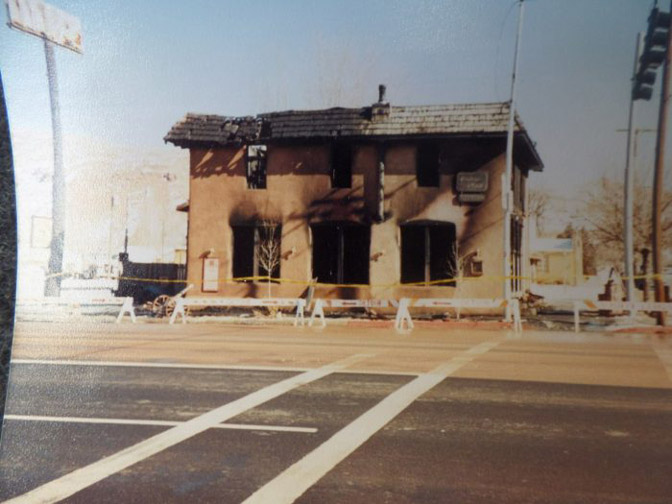
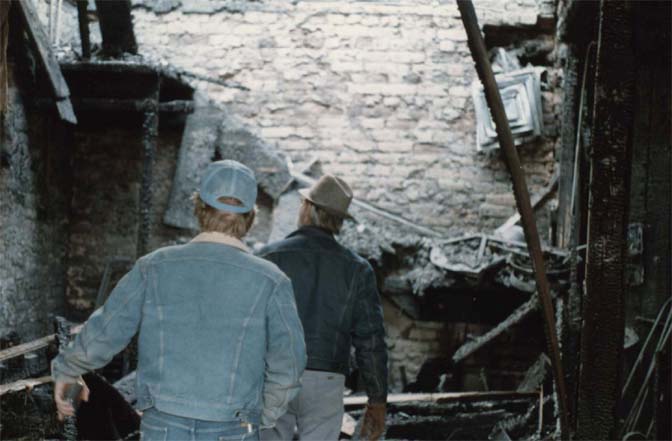
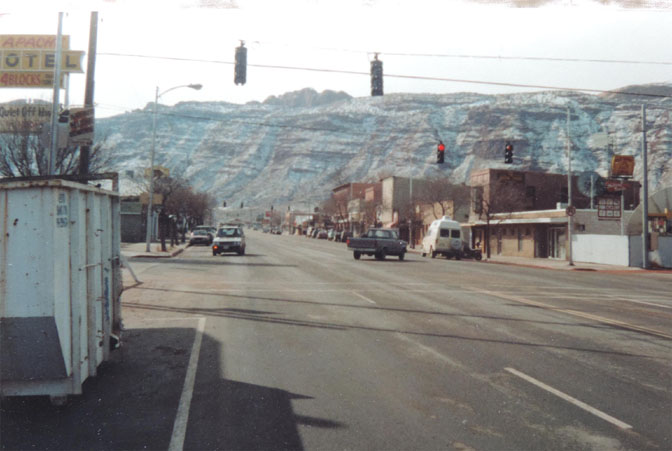
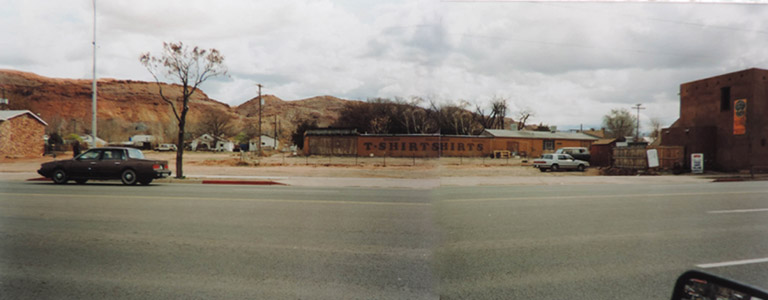
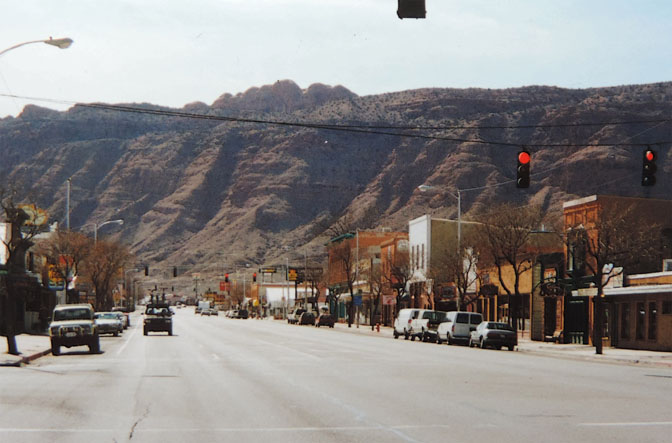
EDWARD ABBEY’S DEATH & MEMORIAL SERVICE
In December, Ed Abbey had made what would be his last trip to Moab. I told him about the proposed Zephyr. Abbey was delighted and later, as we sat in my VW Squareback, sipping beers, he offered to send something for the first issue. “I want to put an original story in your Zephyr,” he said. “Maybe I can become one of your regular correspondents.”
Abbey’s story arrived in mid-February, and with a note from Ed. He had sent me a never-before-published essay called, “Hard Times in Santa Fe,” but he hadn’t written it exclusively for The Zephyr. He’d been busy finishing his sequel to ‘The Monkey Wrench Gang’ and was trying to beat a deadline. We would learn soon that the deadline was for more than his latest novel.
I started The Zephyr and printed the first issue on March 14, 1989. When I returned from Cortez with the first load of monthlies, I learned that Edward Abbey had died that morning.
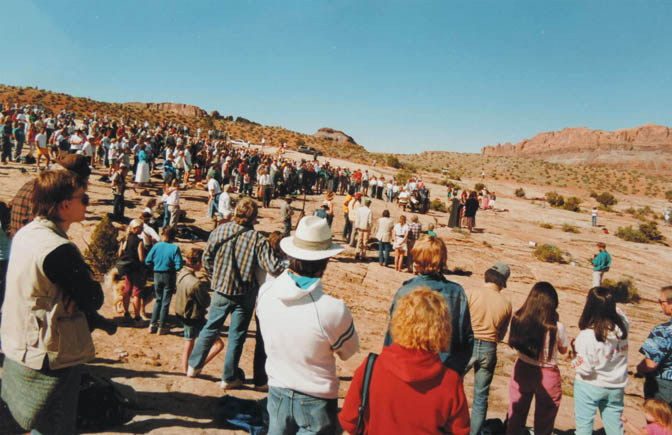
(Photograph by Mike Hill)
In late May, a larger public memorial service was announced and some of Abbey’s best friends spoke. My job was to find a site for the event. I inquired about a location at Arches but I was hit with permit applications and fees and a requirement to provide port-a-potties, I decided Abbey would prefer a different venue.
I finally picked a site on the mesa above Arches but outside the park. To get there, everyone had to drive the old abandoned road to the top of the canyon and then walk the last mile. In the early hours before the service, I couldn’t sleep and so I drove up Moab Canyon at three in the morning to watch the night sky. All through the night, a slow but steady stream of car lights climbed the old road. Mourners came from all over the West, from all over the country. By the time the service began, a thousand people had come to say goodbye to Edward Abbey.
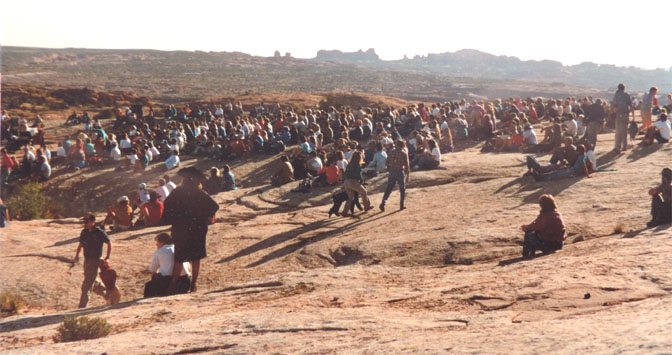
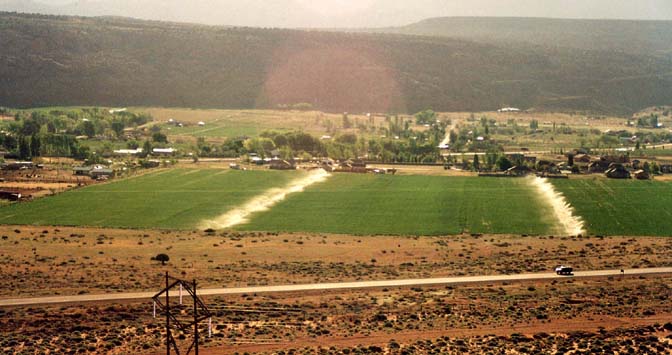
In 1991, I wrote my first editorial that openly questioned the wisdom of a “New West.” It resonated enough with editor Betsy Marston at ‘High Country News’ that she asked if HCN could re-print it. In the essay I wrote:
“…we came around a corner and saw local rancher Don Holyoak with a couple dozen cows. Smelly, stupid, fly-ridden cows…’stinking bovines,’ Abbey used to call them…I was glad to see them.
This is not just another complaint about our changing town– the New Moab. What’s happening here is happening elsewhere. And what’s coming may be bigger than even we doomsayers would dare predict. Barring a miracle, we are about to enter a new phase, the last phase, in the taming of the West. When it’s over it won’t be “the West” anymore. We all know ‘how the West was won.’ What we are about to see is ‘how the West was done.’ To use a recently popular expression, pretty soon, you can stick a fork in it. And all of us, no matter how much we love the country bear responsibility.”
It finally occurred to me that none of my ‘green’ pals thought there was really much of a problem. In fact, while I and others may have “stuck a fork in Moab, others, with very deep pockets, saw an opportunity. Their premise was they wanted to “save Moab. “But as always, it was about something less self-sacrificing. It was about Greed, And transforming Moab.
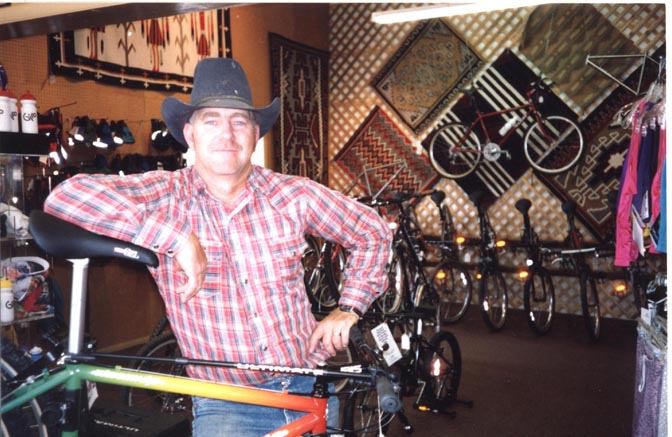
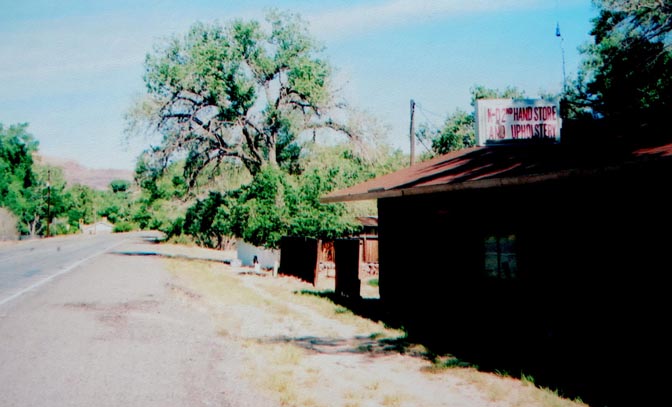
KEN DAVEY…”THE DEAN of THE MOAB PRESS CORPS”
Perhaps one of the most familiar faces in the late 80s and early 90s was the inimitable Ken Davey. Ken came to Moab with his future wife Julie Fox. Ken established himself early-on as an irascible and cranky contributor, but rarely inaccurate. He was also my next day neighbor for years, and we shared what can only be described as one of the most candid friendships I’ve ever known. Ken’s columns not only informed the public and made people think, his acerbic wit diverted attention away from my rants and onto his, giving me a much needed break from whoever it was we’d offended most recently. Ken also wrote for the local weekly and the local television station, “Channel 6.” I can lay claim to the fact that I named Ken the “Dean of the Moab Press Corps.” He died on November 17, 2017
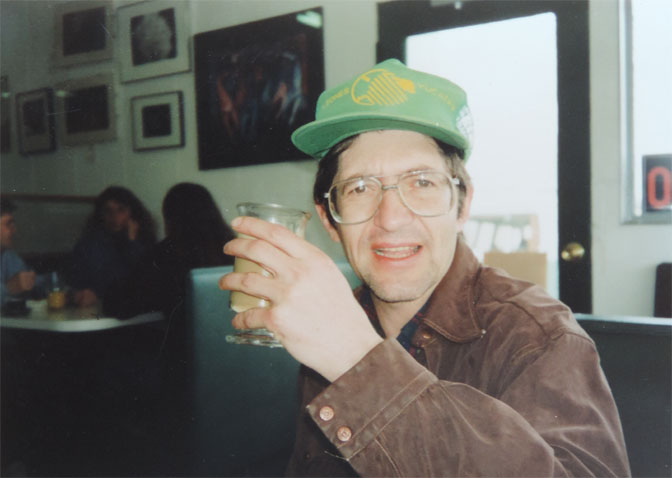
THE ‘OLD’ CITY MARKET
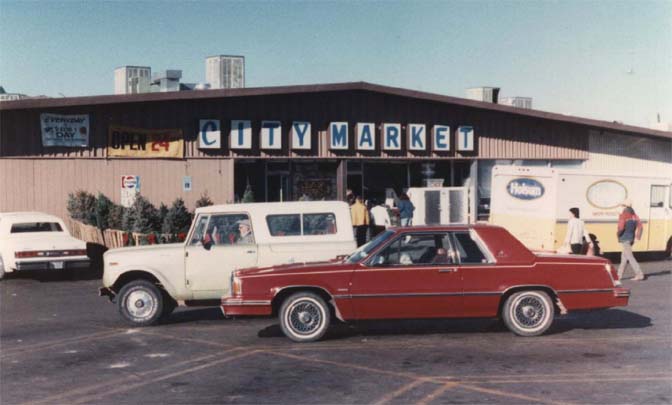
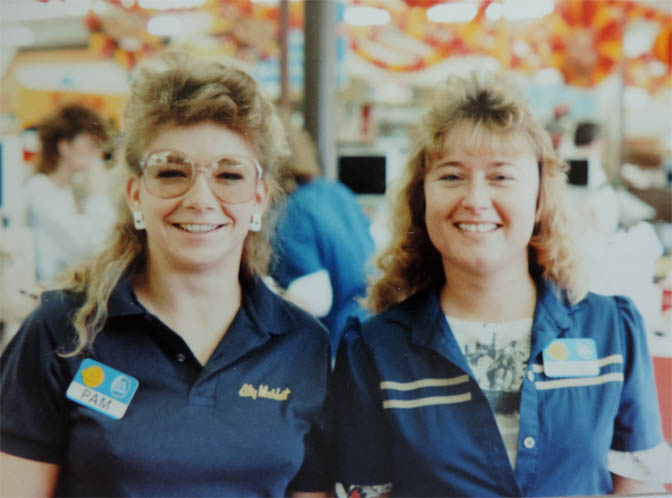
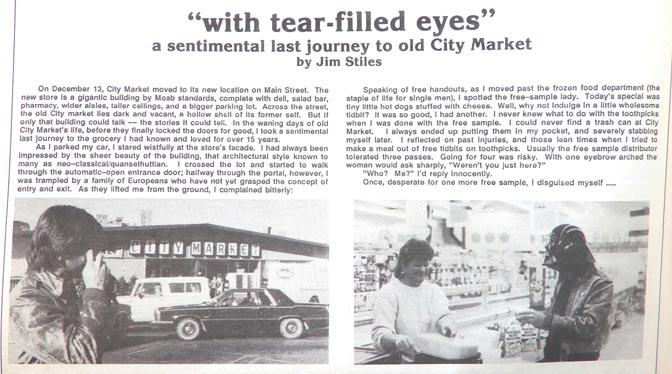
THINKING SMALL, BUT THINKING LOCAL
The financial collapse of Moab’s economic base, and especially the Atlas Mill, created a dire situation for Moab. But rents on Main Street were cheap and even cheaper on Center. Entrepreneurs of all shapes and sizes attempted to make a go of it on their own. These are some of those brave souls.
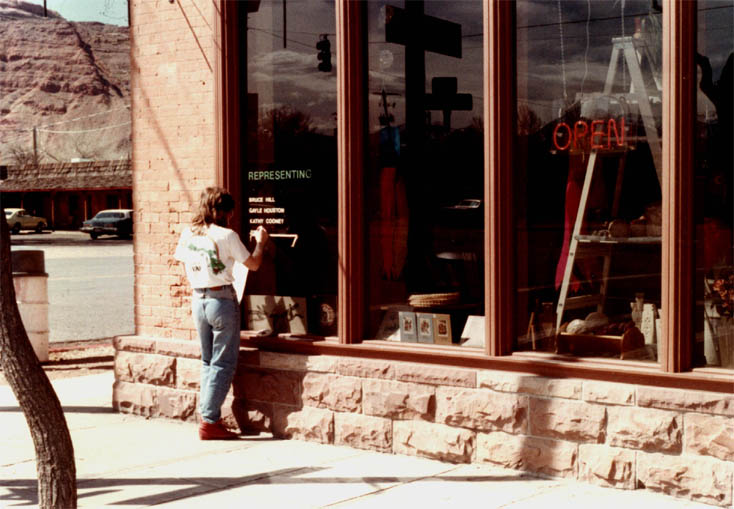
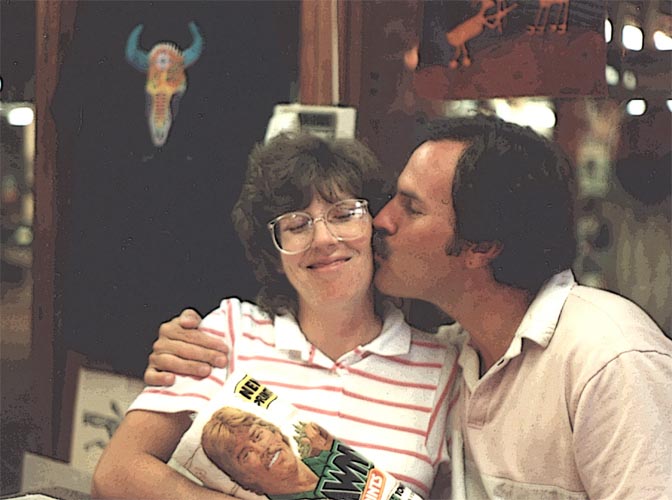
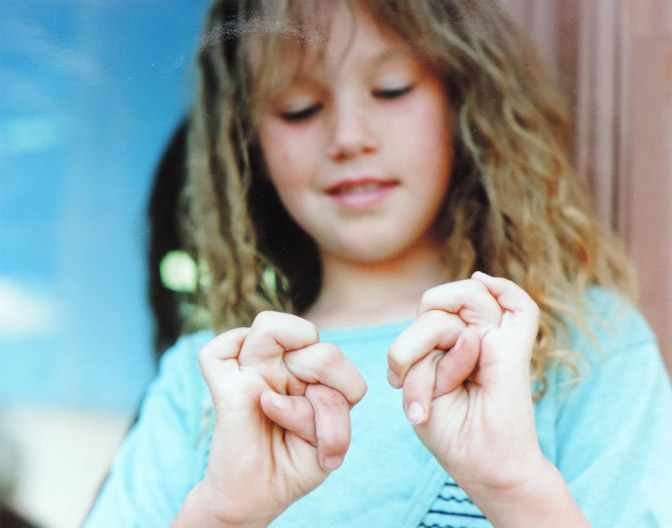
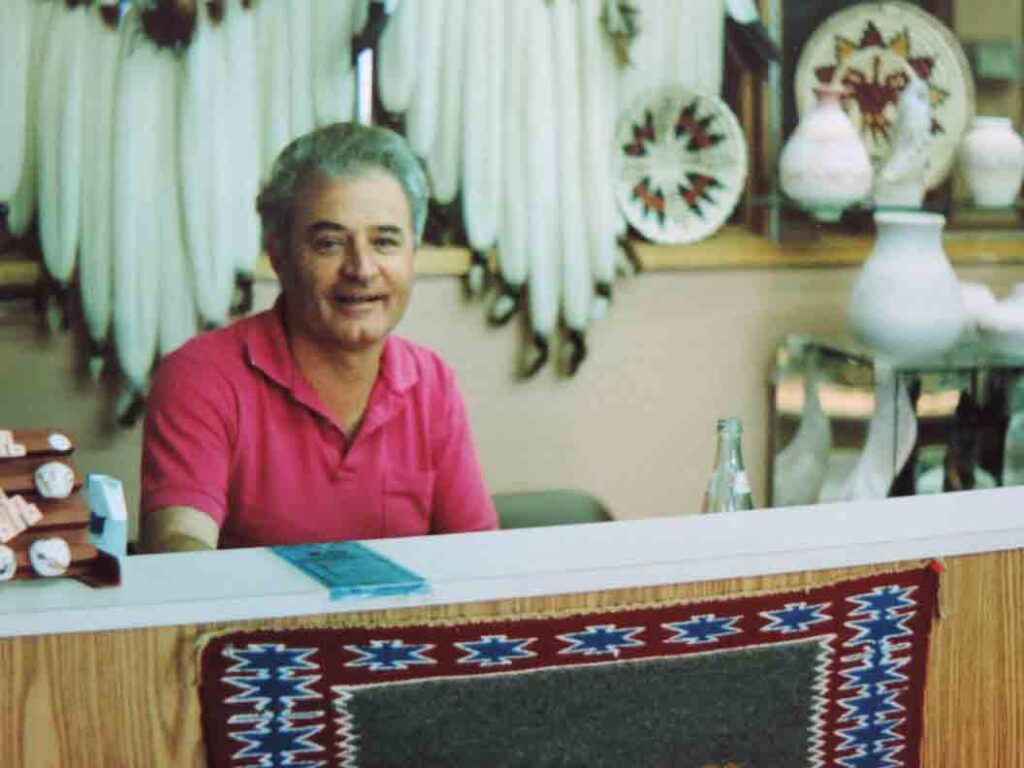
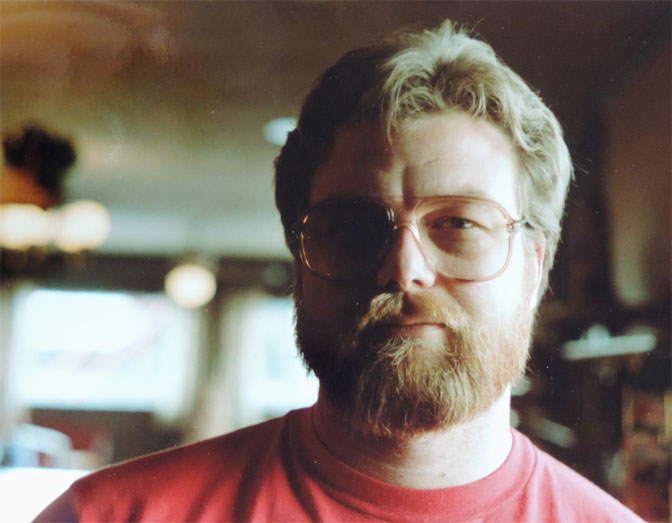
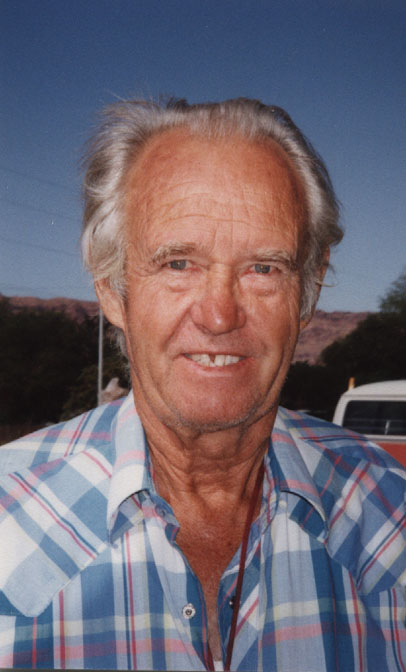
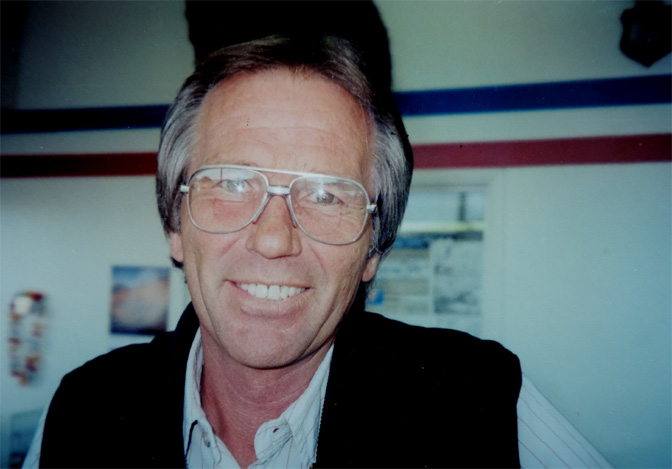
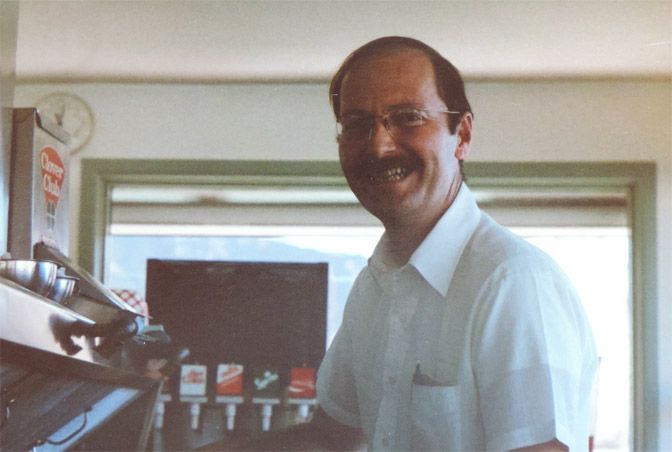
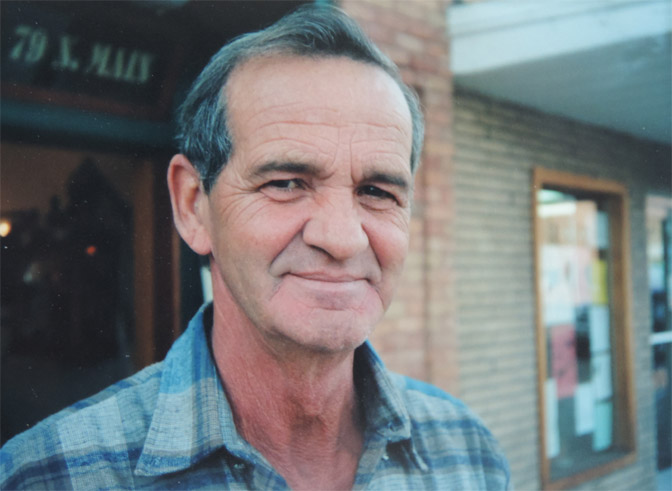
“ROB ‘EM & BILL ‘EM —THE BIRTH OF ‘NEW MOAB’ & RIM CYCLERY w/ Bill & Robin Groff
The Groff Brothers had been involved in the mining industry and wondered how they’d survive in Moab. They had heard about ‘mountain bikes,’ and decided to get into the business.: Rim Cyclery. It would become the stuff of legends. (for a full history, as told by the Groffs, click the hot link above or here.
All these years later, as Moab continues to transmogrify itself into something even more horrid, people look for a scapegoat. WHO CAUSED THIS DISASTER??!!! Some people blame the Groffs, but all they were trying to do was stay in Moab. Recently Ed Abbey and I were held to accounts for ruining Moab, when the always colorful (and charming) Moabite TeriAnn Tibbetts vented on The Zephyr Facebook page:
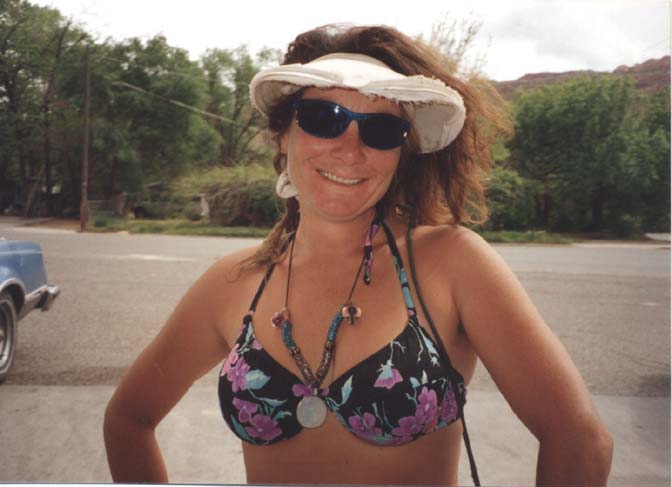
“Back in the day .. When you and your boy ed Abby (sic) started promoting Moab. No brainer. You and him promented (sic) this town into ruin. You and him helped to ruin Moab and then you ran away.It so funny the way you are…I’m still here. Buy my property that you and mister Ed promoted. My father worked with him at arches before you and he said mister Ed was going to ruin Moab. And you as his little boy joined in. I watched it happen.”
The fact is, all of us who stayed and tried to make a living in Moab, not realizing what the Future held, were and are culpable of contributing to the changes. But I almost went broke because new corporate run businesses were coming to Moab and were only there to make more money. As an example, Jim Sarten owned North American River Company and ran ads with The Zephyr for 14 years. But when he wanted to retire and sold his business to a corporate company out of San Diego, they immediately canceled their Zephyr ad. I asked why and I had to ask for an explanation when they wrote back simply, “not enough ROI.” I didn’t even know what ROI meant. I would find out in spades.
RETURN ON INVESTMENT?
Ultimately, the mainstream Utah environmental organizations, funded by some of the wealthiest billionaires on the planet, threw its support to the “clean, non-polluting” tourist industry to replace the extractive economy that the rural west had depended on for a century. Many New Moabites benefitted, as did some of the Old Moabites who were already wealthy. But it did little for the working class.
City and county governments did little to stem the flow. In fact they encouraged it, always insisting that increasing the tax base would ease the tax burden on locals. One has to paraphrase Reagan’s question to Americans in 1980. “Are Moabites better off now than they were forty years ago?”
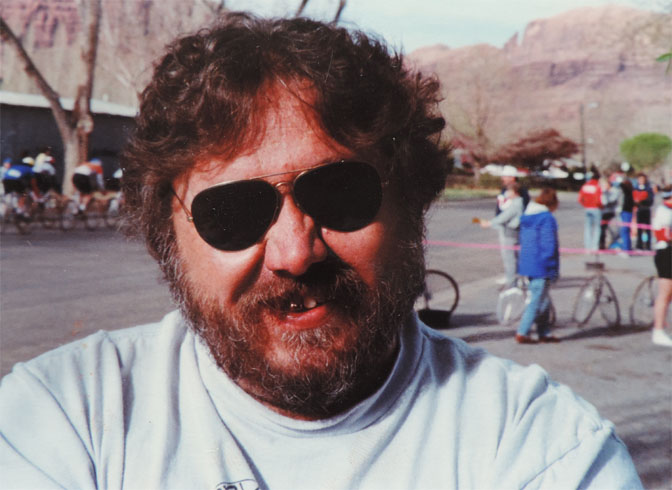
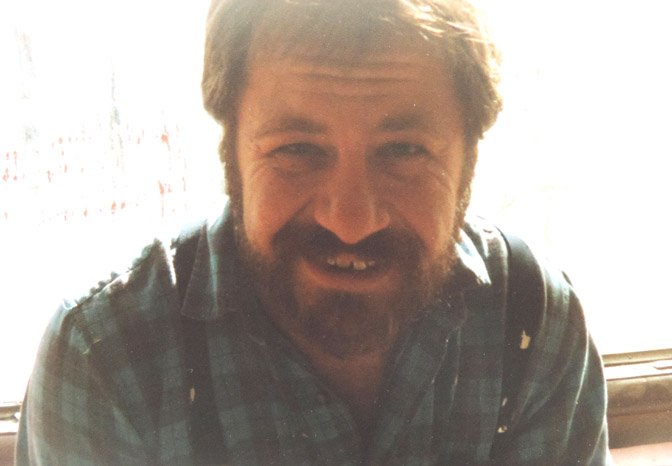
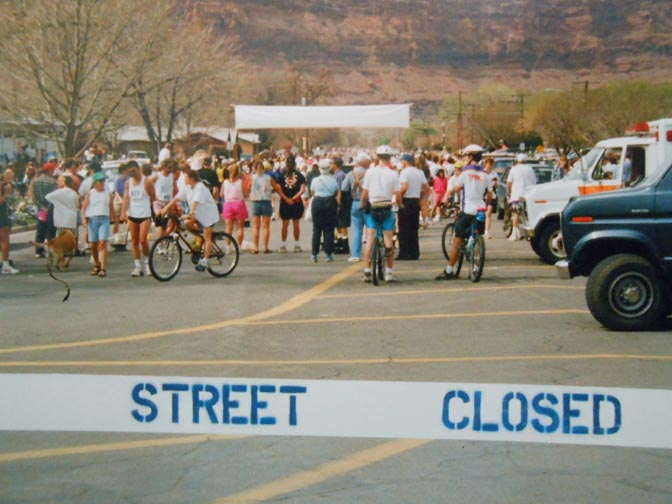
THE BLOOMING of THE SAND FLATS…1989
The Slickrock Bike trail was originally intended for motorbikes, but over the years, the trail was almost forgotten by the powered bike folks. But with the advent of the mountain bicycle, some of its proponents decided to re-purpose the old Slickrock Trail. The idea caught fire almost immediately and was truly an “overnight sensation.” The trail was on public land, and there were very few regulations in place to deal with the newfound masses. The BLM was overwhelmed. It was one of the first times I openly asked, “Is THIS really better than cows?”
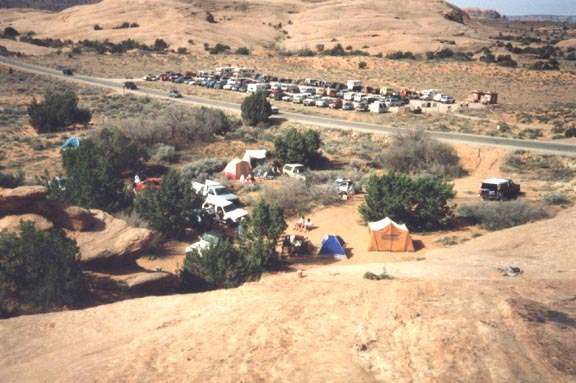
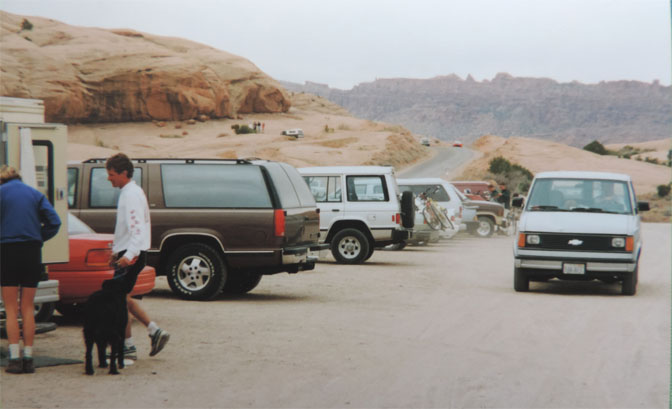
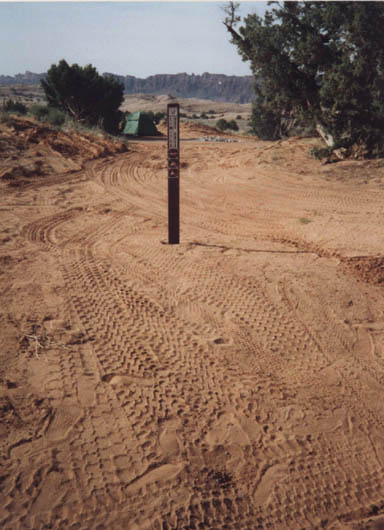
LIKE A METEOR, THE MAIN STREET BROILER BURNED BRIGHT WHILE IT LASTED.
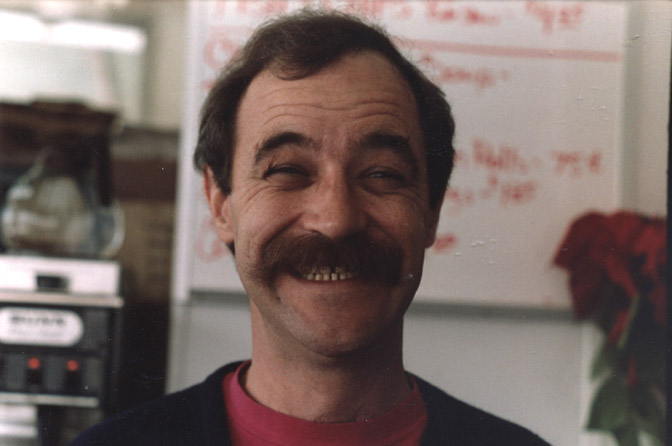
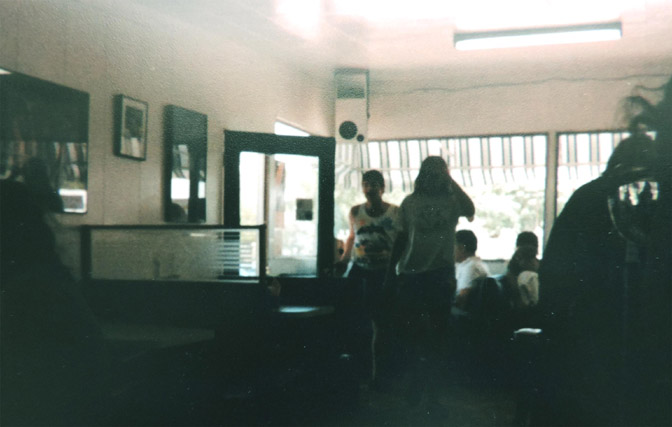
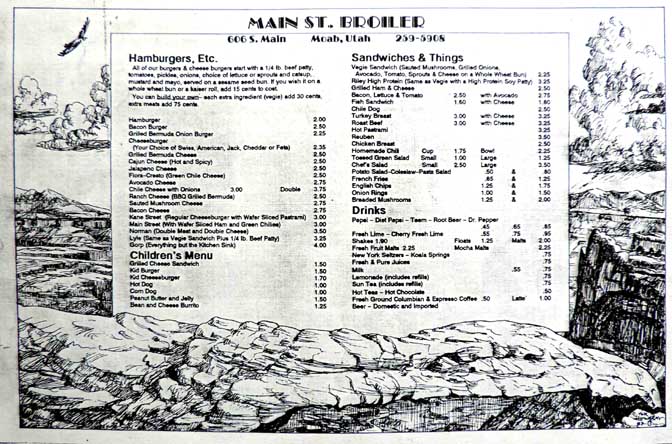
THE CANYONLANDS CAFE’ & MOTEL. RIP
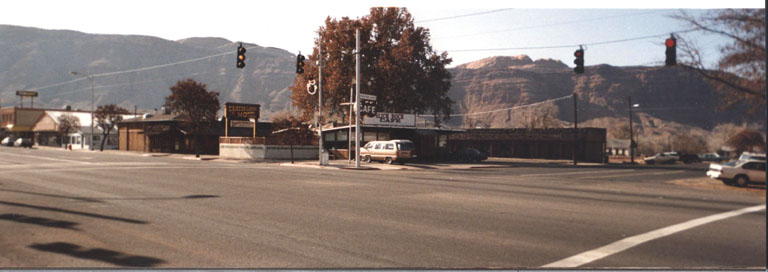
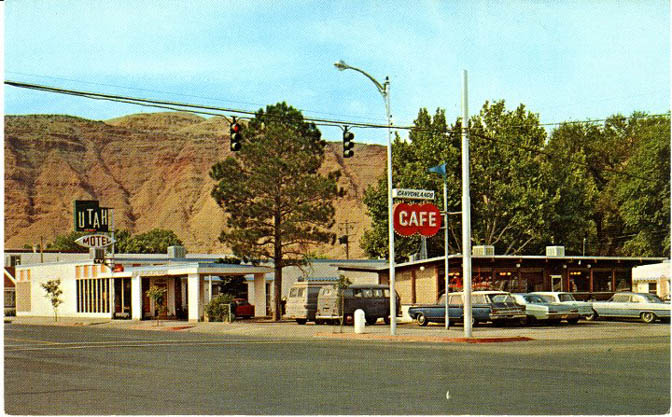
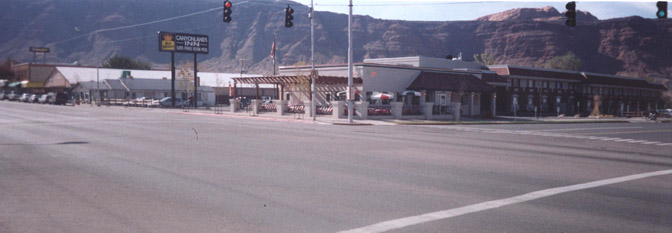
THE OLD JAIL HOUSE BECOMES THE JAIL HOUSE CAFE
The old jail house that sat at the corner of Main Street and First North had sat vacant for years. Along with a rash of Park City developers, one of Moab’s first New Moab “Deep Pockets” residents to invest heavily in Moab’s future was young Will Petty. Among his many acquisitions was the jail house. Here, Paul Seibert and Terry Knouff pause from their work to wave for the camera.
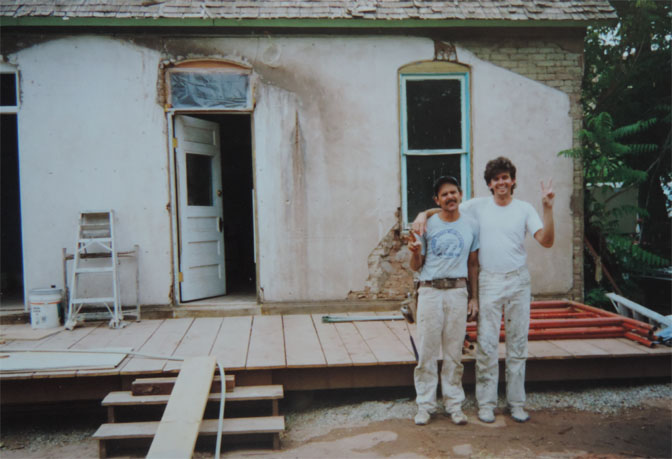
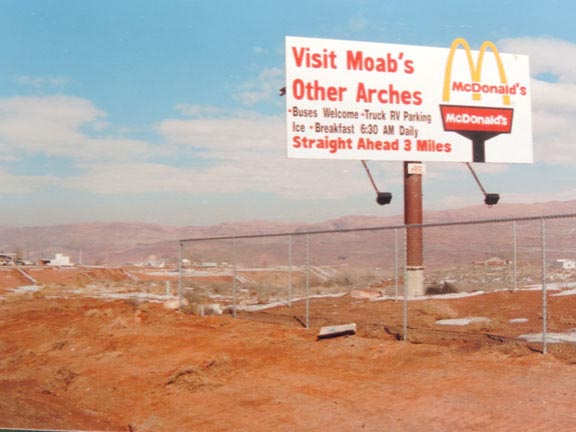
THIS IS JUST VOLUME 1… I’VE STRUGGLED TO LEAVE OTHER IMAGES OF FACES THAT ARE NO LONGER WITH US (AND SOME THAT) ARE, 35 YEARS LATER, & PLACES THAT ARE SLOWLY BEING DEMOLISHED. SY PLEASE STAY TUNED FOR ‘VOLUME 2’ OF THIS SERIES…COMING IN THE ENXT FEW WEEKS…THANKS & REMEMBER TO COMMENT DOWN BELOW! Jim Stiles
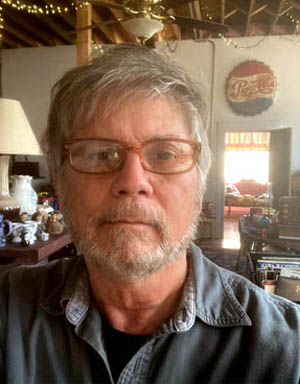
Jim Stiles is the publisher and editor of The Zephyr. Still “hopelessly clinging to the past since 1989.” Though he spent 40 years living in the canyon country of southeast Utah, Stiles now resides with two cats, Rambo & Rascal, on the Great Plains. Coldwater, Kansas is a tiny farm and ranch community, where there are no tourists.
He can be reached via facebook. Messenger, or by email: cczephyr@gmail.com
TO COMMENT ON THIS STORY, PLEASE SCROLL TO THE VERY BOTTOM OF THIS PAGE.

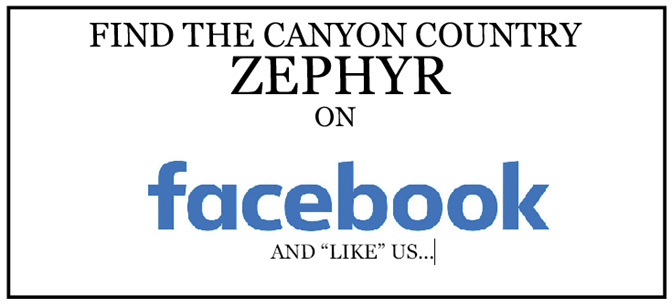
And I encourage you to “like” & “share” individual posts.
Why they can’t just leave the site alone is beyond me,
but that’s what Facebook likes to do.
ALSO NOTE: I post old photographs and stories from our 25 year old archives every day. Pictures from Herb Ringer, Edna Fridley, Charles Kreischer.. even a few old photos from my Dad. So if you want to stay caught up on our historic photo collections,
be sure to “follow” us on Facebook…Thanks…Jim
https://www.facebook.com/FansoftheCanyonCountryZephyr/
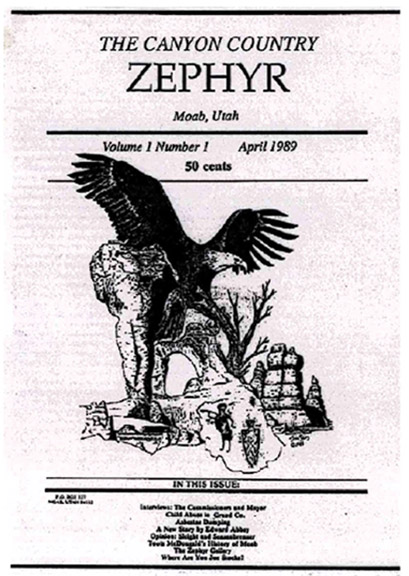
$55 Each or Two for $100 (Free Shipping.)
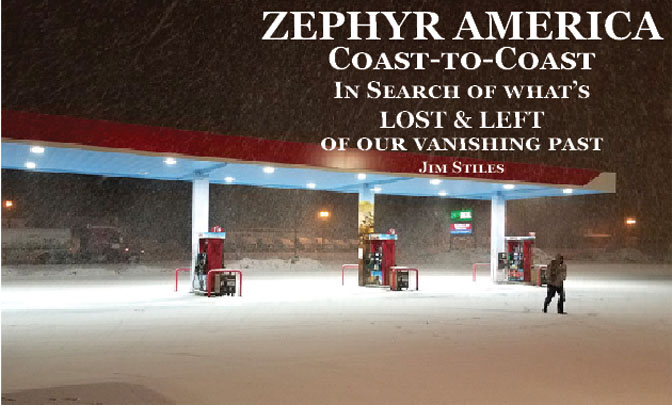
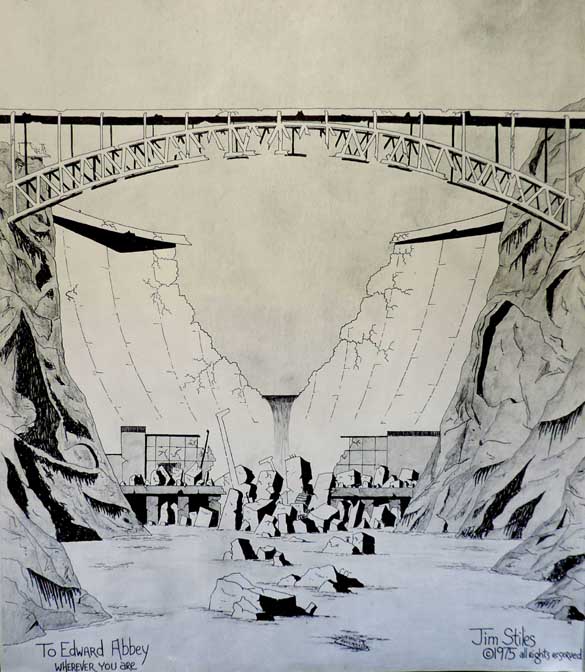
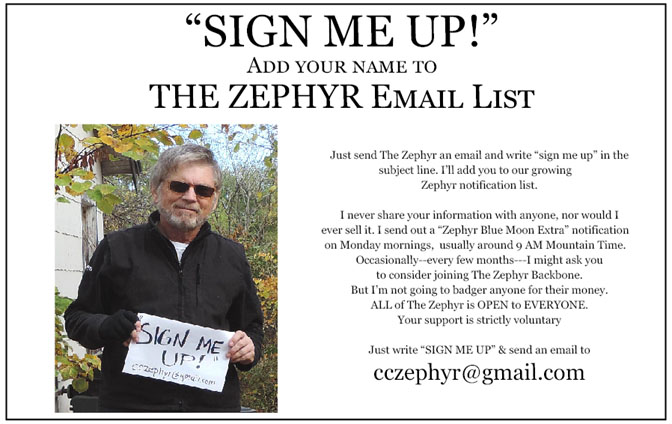
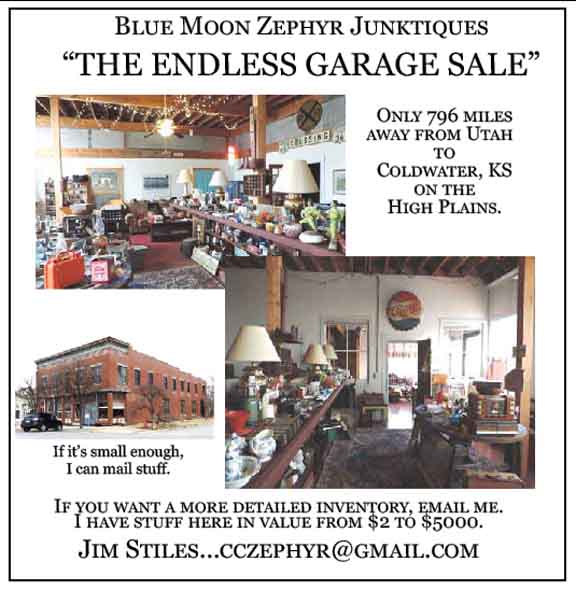
https://www.facebook.com/profile.php?id=100086441524150

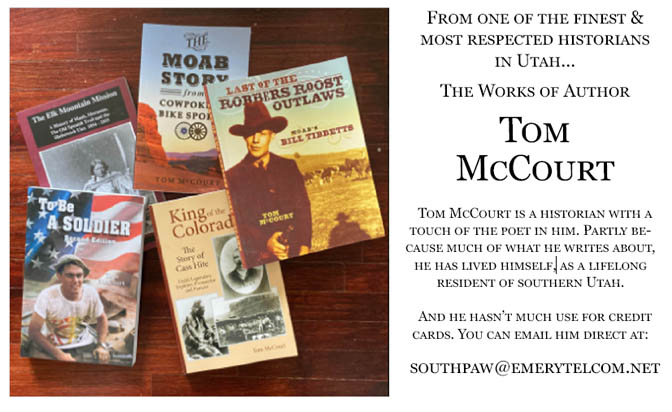
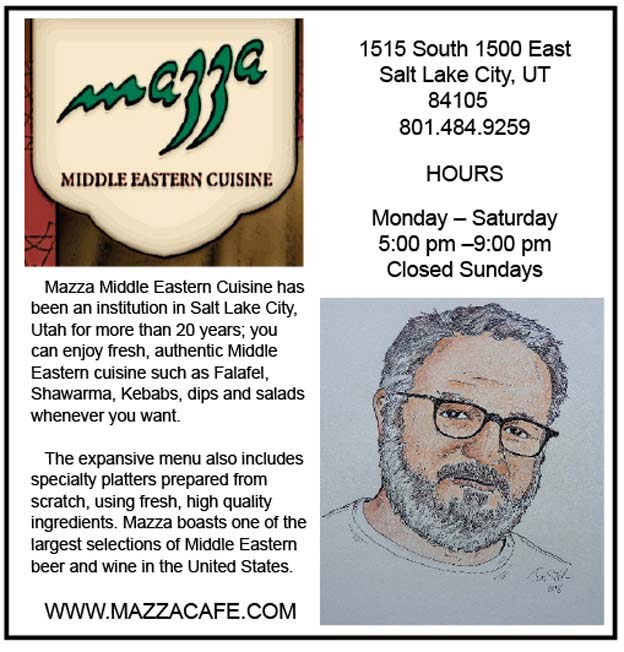
And check out this post about Mazza & our friend Ali Sabbah,
and the greatest of culinary honors:
https://www.saltlakemagazine.com/mazza-salt-lake-city/
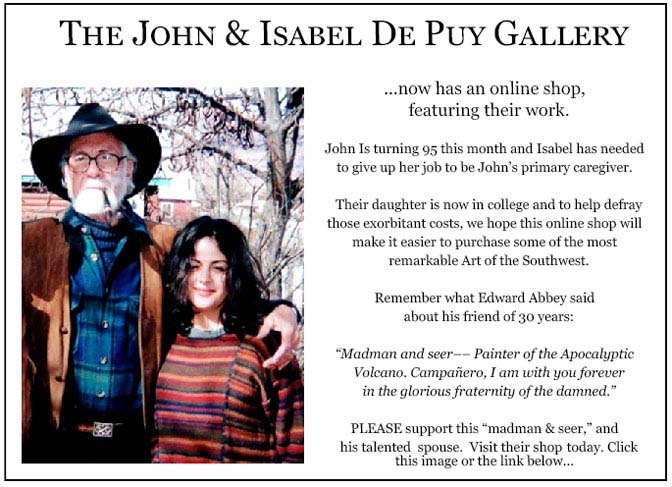
More than six years ago, The Zephyr, me & four other individuals were sued for defamation by the former Moab City Manager. Faced with mounting legal bills, my dear friends John and Isabel De Puy donated one of John’s paintings to be auctioned.
ALL the proceeds went to our defense.
Thanks to them, our bills were almost completely covered.
Now I’d like to return the favor. Check out the link below and their online shop… JS
https://www.depuygallery.com/

https://www.canyoncountryzephyr.com/
REMEMBER! I’D LIKE TO HEAR FROM ZEPHYR READERS. TO COMMENT ON THIS STORY, PLEASE SCROLL TO THE VERY BOTTOM OF THIS PAGE.

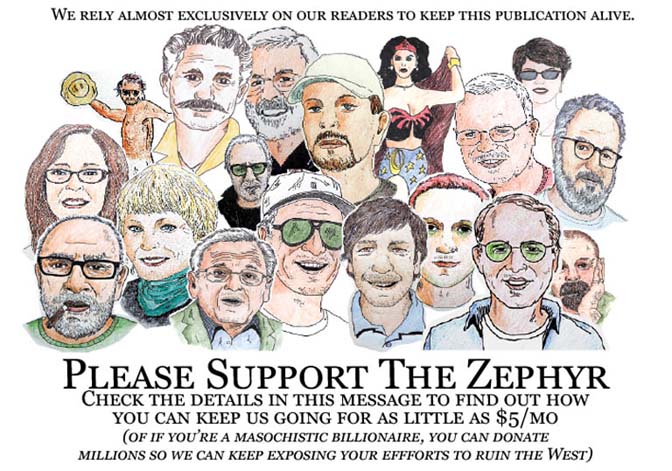
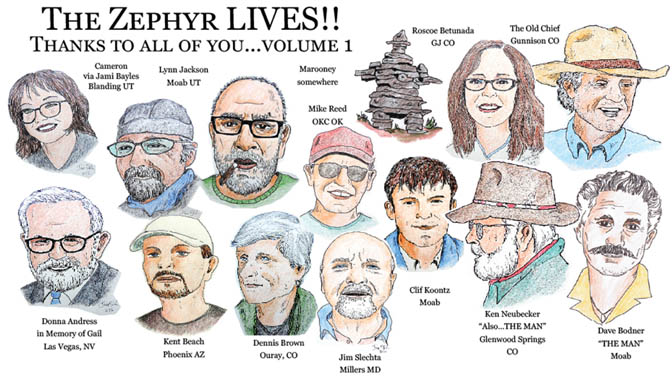
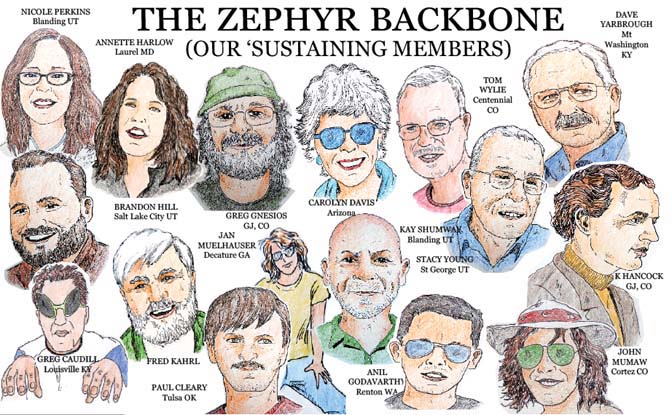
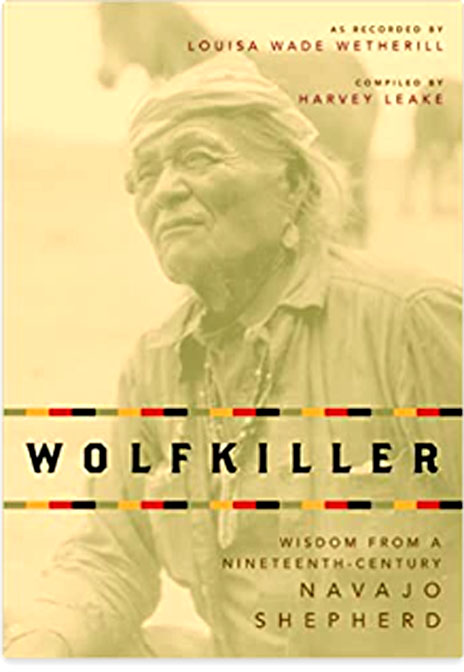
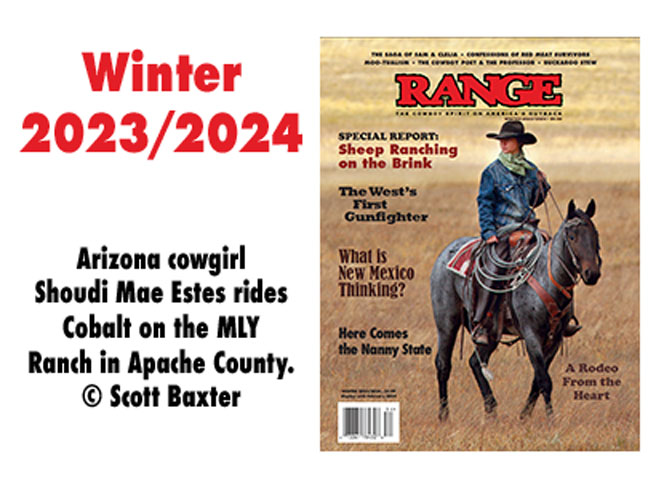
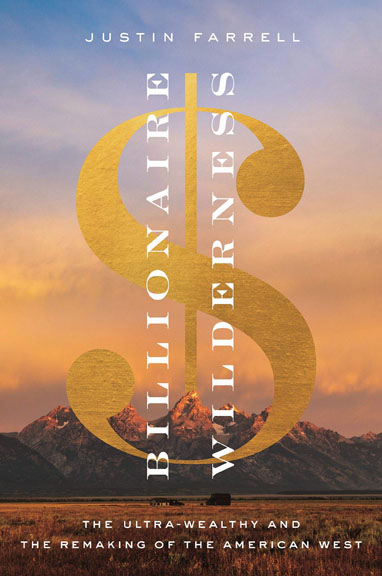
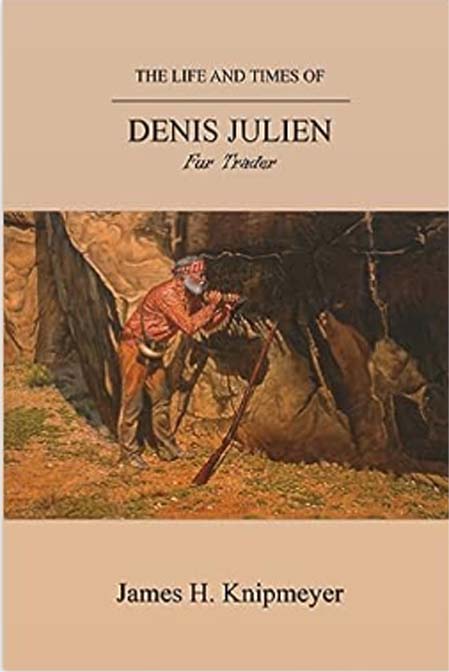
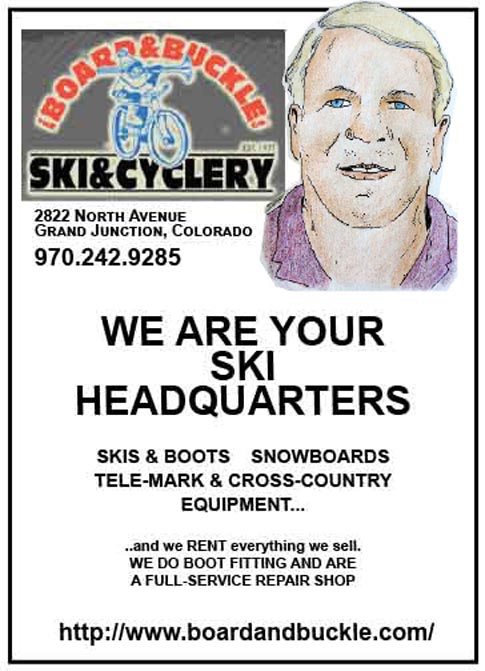
Well, I finally beat Donna to the punch and get to comment first. Maybe she’s out doing some Christmas shopping. 🙂
Thanks for the stroll down memory lane, Stiles. I first saw Moab in 1965 plus or minus and I returned semi-regularly for years until I just couldn’t stand the traffic and the crowds in some of my favorite places. I returned to Moab for the last time on the day after Arches closed because the line to get in stretched all the way from the entrance to Maine street.. I spent one night there with my grandson and the next morning we Paddled a duckie down the Colorado from Hittle Bottom to the BLM takeout. As soon as we got out, we packed our gear and headed out of town. I haven’t been back since. Thanks again for the memories.
Apparently for every one of us who won’t return to Moab, there are 50 people to take our place.
Thanks for sharing, it brings back fond memories. Side by sides of then and now photos would be interesting, (though maybe a bit depressing) for those who haven’t been back for decades.
I have a few “before and after” pics. I’ll save them for another day.
Hey Jim, Something about D-8 Cats, dump trucks and survey flags in Moab got me thinking about you. Been visiting my ex in Moab in the early stages of Alz. disease. Funny how she remembers the jerk I could be and she brought back the name of Linda Tailee- I think an ex of yours? But back to changes, took a walk past the old Egg Ranch “site” down Kane Ck. to discover the latest new development- elite homes and retail on the way. All the caves closed up and the mobile homes from Moonflower Cyn to past Charlie Nelson’s buildings gone. You warned us ! Hope Kansas is treating you well. Stevan Grah ’84-2015 Moab and now near Paonia, Colo
You have captured a pivotal moment in time as the historic Moab was passing into history. In the mid-80s, one of the big Salt Lake culture magazines published an article about mountain biking in Moab. “The China Syndrome,” a brilliant piece of communist propaganda, helped put an end to the uranium industry. Extraction industries were becoming politically-incorrect, Ed Abbey’s anti-cattle screeds took hold in the brains of “environmentalists” like burrowing mindworms, and Americans prospered as the economy boomed in the post-Carter era. Then came a seismic shift from the blue-collar, working peoples’ ethos to that of outdoor recreation as the ultimate aspiration and status symbol.
I was pregnant with my first son in 1988 and worked as a waitress at the Cattlemen’s on south highway. The clientele were literally truckers, cowboys and local blue-collar workers and their families. I used to walk my border collie mix dog, Jasper, all along 4th East–from the Oviatt’s old house to the highway–for exercise. It was quiet, the pastures smelled of livestock silage, the traffic was light, people were friendly, and it still felt like home.
Once Industrial Tourism took hold, everything changed. It was the old-timers–my mom for example–who were pained most by the new “outdoor” materialism that took Moab over.
Great stuff, Jim! I always like looking at your “past” photographs. The pics of the Canyonlands Cafe and of Lin Ottinger were especially nostalgic. The homemade pies, especially the blueberry, were out of this world. And Lin gave me my first off-road advice ‘way back in 1965! Besides his VW-buses, I remember his “dune buggies.” I remember going out with he and his family one time to Gemini Bridges. Not a paid tourist trip, but a free one just because we had become good friends!
My understanding is that Walmart is going to try to make a run at Moab again. Supposedly a much smaller store as in Pagosa Springs, Colorado. With more growth, comes more changes.
One of the worst meals I ever had in Moab was at the Jailhouse Cafe (apologies to those who loved it). That was in the mid-80s no doubt, when it was a challenge just to find a place to have dinner in town. We only came into town when weather drove us from our tent out there in the ‘back-of-beyond’. In those days, you could drive (and I did) a Toyota Corolla to what “seemed” like the back-of-beyond. My first dispersed Moab campsite is now a bicycle trail trailhead. We were appalled to discover “Pasta Jay’s” on main street, having come from Boulder where the original Jay’s restaurant had been housed in a tiny little house on west Pearl. That block of west Pearl was completely Moabized, doncha know!
Definitely not 1989.
Thanks for the memories. I lived in Moab from ‘80 until’98 I worked as a guide on The River for Jim and Elda Sarten for 12 years it was indeed an exceptional time of my life, hanging out with some very special people some are gone and some remain . Please let me tell all of you and you know who you are: Thank you for being part of my life. An unforgettable place really describes this sacred place…
I arrived here to stay in 1991 after years of visiting. Like Jim, I bought a house I couldn’t afford and 32 years later I’m still living in it. It’s right up the street from Jim’s old home. I read and enjoyed every word of this story, remembering all the people, enjoying seeing the photos. Thanks so much Jim! Jeannine Wait. a.k.a. G-9
Wonderful, though tragic, stroll down memory lane! Those were my early days in Moab and I remember them with longing and great fondness.
Thanks Jim, it’s really nostalgic to read your posts and see the pictures of Moab and Moabites. So many memories of people and places.
Thanks for the memories, Jim. I grew up in Blanding. Dad took us to Moab to water ski on the Colorado in the 50s and 60s. Loved eating at Milt’s. These days, I depart Main Street on one end of town and drive past the hospital to re-enter Main on the other end of town. It’s usually a traffic nightmare to do otherwise. I belong to the group of cranky old people who believe tourism ruined a really great place.
From one cranky ex-Moabite to another…
Thank you Jim. This was great to reflect on. Good memories for sure. A little bit of progress was ok, but now overboard.
I think I have a picture of your mom that I’ll post next time.
I started coming to Moab in May 1989, so this evokes a ton of nostalgia! Thanks for the memories, Jim.
Thanks for sharing Jim great as always. Have a Merry Christmas!
Thanks Shannon. I appreciate your Zephyr support. Always…
Several places I’ve lived in have changed so radically they can barely be recognized. San Juan Capistrano, Lake Elsinore; Highland Park LA where the hipsters took a working class neighborhood and turned it into coffee shop central and now the town I live in southern Oregon on the coast which is going AirBnB crazy leaving less places for the locals to live. Solution – a large amount of people living in the area RV parks but with a terrible housing shortage if you don’t want to live in an RV or trailer.
It was 1989 when my family left Moab for the northern towns of Utah—Provo and Orem. I was 12 years old—too young to appreciate history or change or the effects that commerce can have on a place—but I cried my eyes out as we drove HWY 191. Though I still live north, I have kept one foot in Moab as best I can since then and still consider the region my home, but these pictures depict how I best remember it—AND how I preferred it. Thanks, Jim.